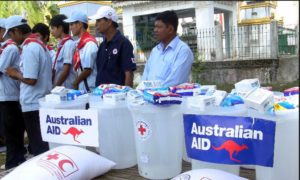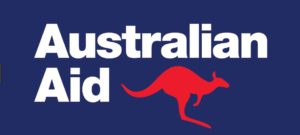Mixed report card on Australia’s overseas aid
 Australia’s foreign aid program has been criticised by the Organisation for Economic Development (OECD) after a series of cuts to the program’s budget.
Australia’s foreign aid program has been criticised by the Organisation for Economic Development (OECD) after a series of cuts to the program’s budget.
The OECD’s latest Development Assistance Committee Peer Review of Australia identified both good and bad aspects of Australia’s aid program.
The review praised the introduction of a robust performance-based framework for aid policy, encouragement of innovation, a development-friendly outlook on trade as well as a focus on ‘small island developing states’ (SIDS).
But it expressed disappointment over what it termed “the negative impact” of successive cuts to overall aid program effectiveness.
In the 2017 federal budget, aid spending increased for the first time in four years, growing by $84.6 million with total official development assistance set at $3.9 billion.
But forward estimates show the increase is likely to be temporary.
Forecasts included in the budget show aid increasing by another $97.6 million in 2018-19 but after that remaining steady until 2021-22, at which point $303.3 million Australian dollars are reported to be diverted from overseas development aid to counterterrorism organisations.
“Australia uses its voice on the global stage to advocate for responses to challenges faced by small island developing states, in particular to build resilience and mitigate disaster risk,” said Charlotte Petri Gornitzka, chair of the review committee in releasing the review.
“At the same time, the decline in aid flows, despite steady economic growth, has affected the scope of development and humanitarian programs, and we encourage Australia to find a way to reverse this trend,” Ms Petri Gornitzka said.
 The OECD report commended Australia’s willingness to take a leadership role in delivering development outcomes, and actively being a part of global conversations.
The OECD report commended Australia’s willingness to take a leadership role in delivering development outcomes, and actively being a part of global conversations.
“It actively and consistently advocates for the interests of small island developing states and the Pacific region, as well as for issues such as disability, gender equality, peace and security, and ocean management,” the report said.
Australia’s focus on SIDS as part of their refocused aid program on the Indo-Pacific region was also highly regarded, with the report saying this allowed the program to address ‘the unique challenges in building economic resilience that SIDS, as small and isolated markets, face’.
Between 2012 and 2015, the report says Australia provided $3.94 billion or 26 percent of its total development assistance to SIDS, which accounted for 25 percent of all overseas development aid (ODA) to SIDS in the Pacific and Caribbean.
In the humanitarian space, OECD said Australia excelled at rapid response and cross-government coordination, and was leading in implementation of the localisation of responses. That experience, the report said, would be worth sharing with other DAC donors.
Internally at Department of Foreign Affairs and Trade (DFAT), improvements have been made in reporting of ODA, the department has created a robust learning system and follow up well on recommendations, and have maintained a strong and independent evaluation system through the Office of Development Effectiveness, making Australia well placed to address strategic issues and changing priorities, the OECD report said.
The new Australian volunteer program was also commended for building connections between Australia and developing nations, as well as building aid program awareness within Australia.
The report noted the move of the Australian aid department to DFAT.
It said a key benefit stemming from this was the ability for the aid program to use policy levers beyond aid, including better utilization of trade policies to reduce barriers to trade and ensure preferential access for least developed countries.
Laurie Nowell
AMES Australia Senior Journalist












